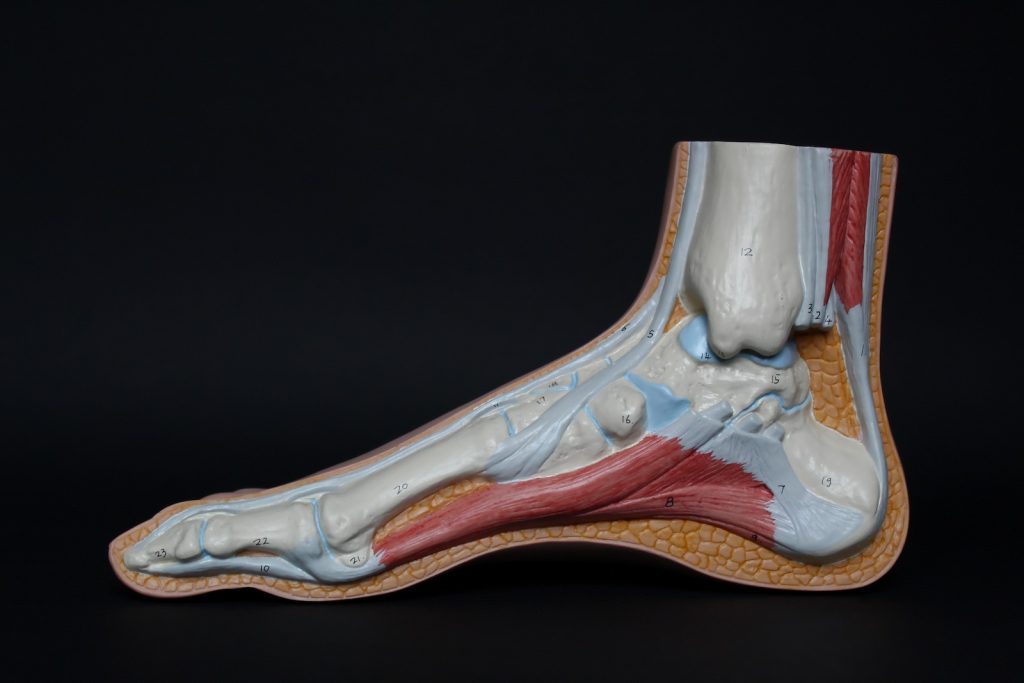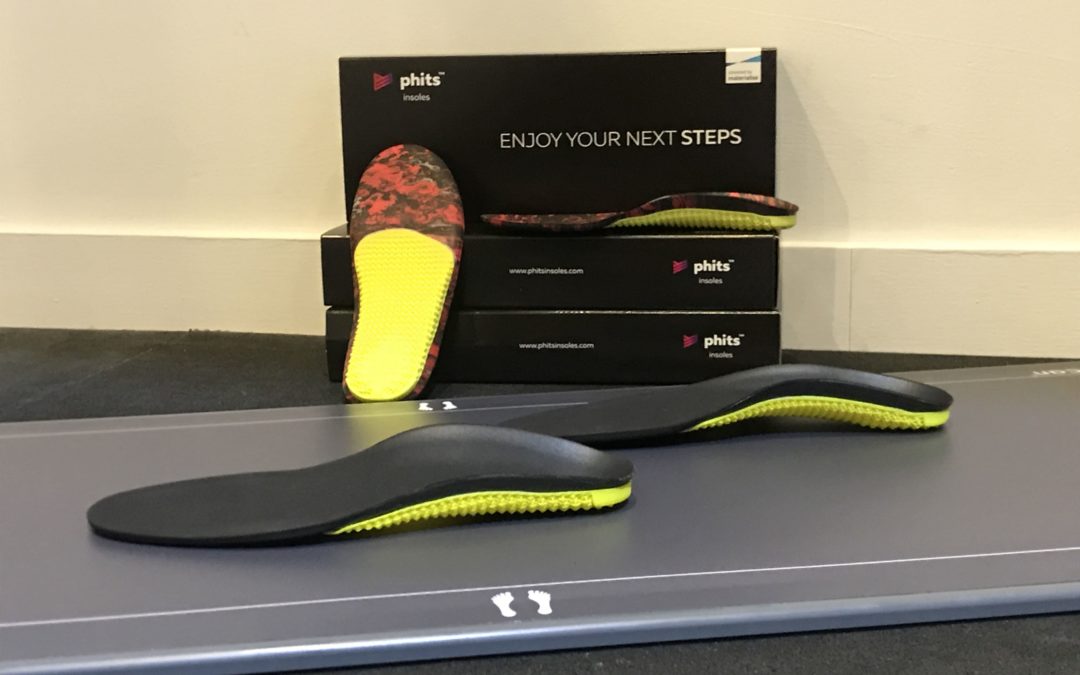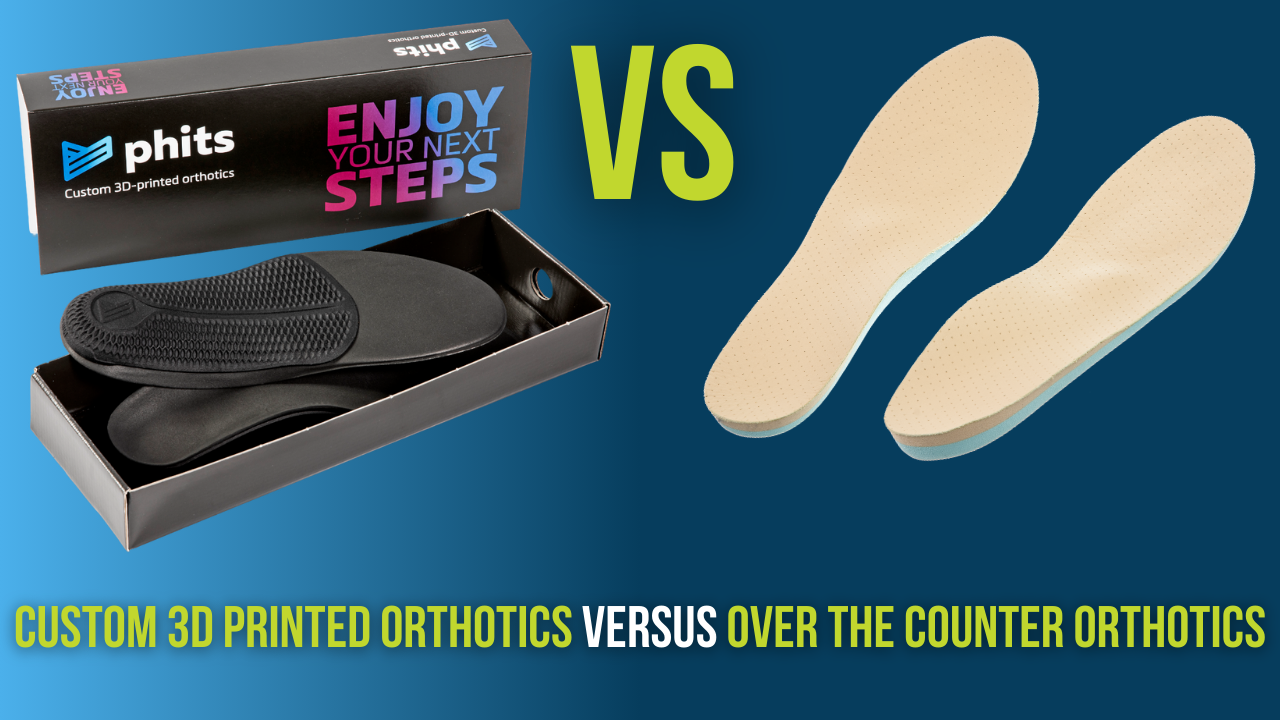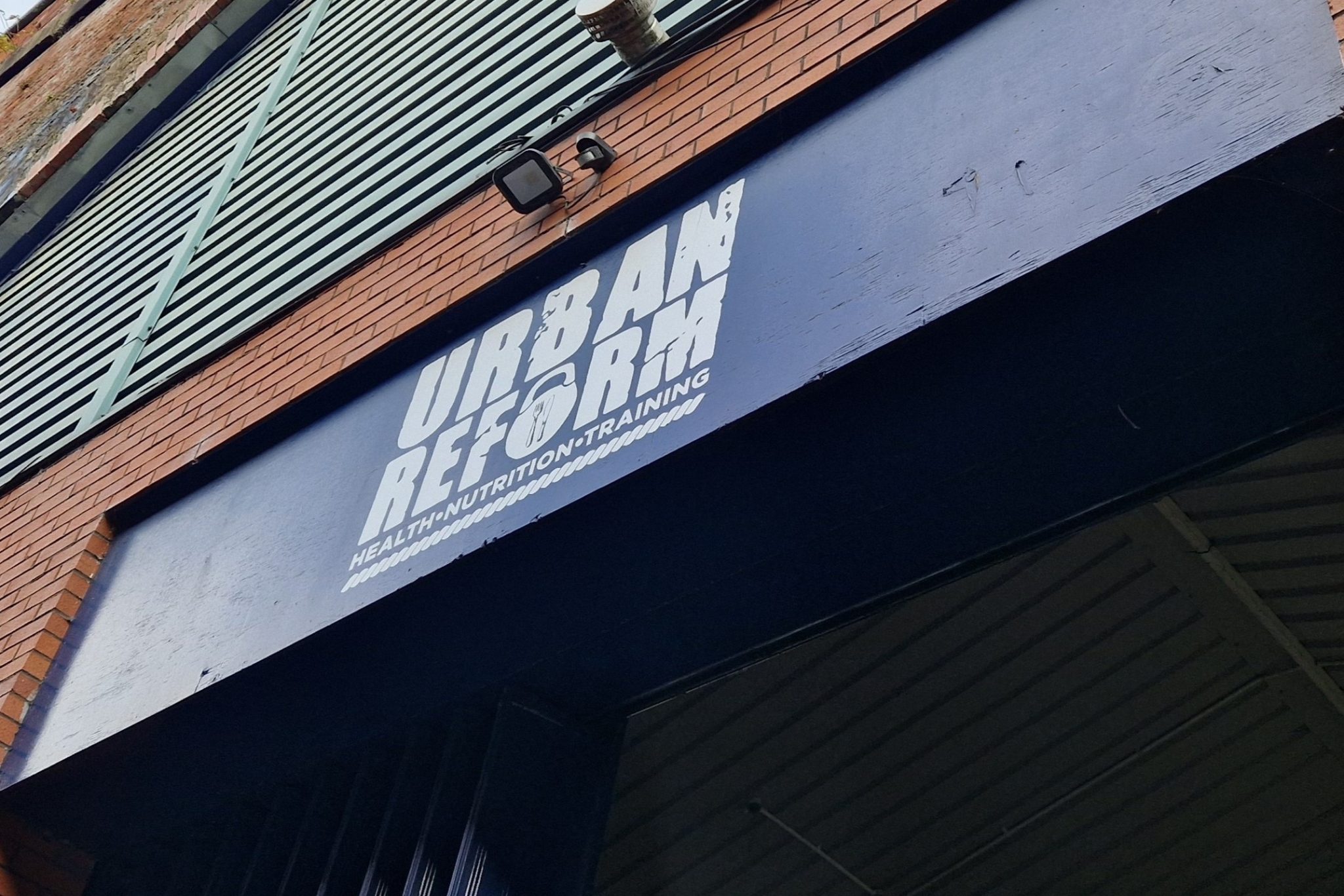MUSCULOSKELETAL HEALTH: The importance of proper footwear
Our feet are often overlooked and underappreciated when it comes to our overall health and well-being. However, these remarkable structures play a crucial role in supporting our entire musculoskeletal system, forming the foundation upon which our bodies rely. In this article, we will explore the intricate connection between foot health and the health of other joints and muscles, shedding light on the importance of caring for our feet and where you might benefit from a custom orthotic to aid this.
THE ANATOMY
To understand the role of our feet in supporting the musculoskeletal system, we must first delve into their complex anatomy.
Each foot contains 26 bones, 33 joints, and over 100 tendons, muscles, and ligaments. This intricate arrangement allows our feet to perform a wide range of movements, from simple tasks like walking and standing to more complex activities such as running and dancing.

The Role of Our Feet in Weight Bearing
One of the primary functions of our feet is to bear the weight of our entire body.
When we stand or walk, the feet distribute this load across the various bones and joints, helping to maintain balance and stability. The arches of the feet, particularly the medial arch (the one along the inner side of the foot), play a significant role in absorbing and distributing this weight.
The interconnectedness between the feet and the rest of the musculoskeletal system becomes evident when we consider that any issues with the feet can lead to problems in other parts of the body.
1. ANKLES
The feet are intimately connected to the ankles. If the arches of the feet are weak or collapse, it can disrupt the alignment of the ankles, leading to instability and increased risk of ankle sprains and injuries.
2. KNEEs
Misalignment in the feet can have a cascading effect on the knees. When the feet pronate excessively (roll inward) or supinate (roll outward), it can alter the alignment of the knees, potentially causing pain and increasing the risk of conditions like patellofemoral pain syndrome.
3. HIPS
The alignment of the hips is influenced by the positioning of the feet. Problems with foot posture can lead to hip pain and even contribute to conditions like hip impingement.
3. LOWER BACK
The spine’s alignment is also impacted by the feet. When the feet are not properly aligned, it can create imbalances in the lower back, leading to chronic pain and discomfort
The Impact of Ill-Fitting Footwear

Wearing inappropriate or poorly fitting shoes can have significant consequences on our feet and overall musculoskeletal health. These consequences can range from immediate discomfort to long-term musculoskeletal problems.
To illustrate the impact of bad footwear choices, let’s explore some real-life examples and case studies.
Foot Pain and Discomfort
Example: High heels are a classic example of inappropriate footwear. Wearing high heels can cause acute pain in the ball of the foot (metatarsalgia) and contribute to conditions like bunions and hammertoes. A study published in the Journal of Foot and Ankle Surgery found that women who frequently wore high heels experienced greater discomfort and decreased foot function.
blisters and calluses
Example: Tight or poorly fitting shoes can create friction against the skin, leading to painful blisters and calluses. A study published in the Journal of the American Podiatric Medical Association reported that ill-fitting shoes were a primary factor in the development of foot lesions among athletes.
PLAntar fasciitis
Example: Wearing shoes with inadequate arch support can contribute to plantar fasciitis, a painful condition characterised by inflammation of the plantar fascia, a band of tissue that runs along the bottom of the foot.
BACK AND KNEE PAIN
Example: Improper footwear can lead to gait abnormalities and postural changes, which can result in back and knee pain. A study published in the Journal of Physical Therapy Science demonstrated that subjects who wore inappropriate shoes experienced alterations in gait patterns, leading to increased stress on the lower back and knees.
FALL AND INJURY RISK
Example: Wearing shoes that do not provide proper traction, especially in elderly individuals, can increase the risk of slips and falls. A case report published in the Journal of Foot and Ankle Surgery highlighted how ill-fitting shoes were a contributing factor to falls and fractures in older patients.
Custom Orthotics: Tailored Solutions for Better Foot Health
Custom orthotics, also known as orthopaedic insoles or shoe inserts, offer a range of benefits in addressing gait abnormalities and supporting proper foot alignment.
These personalised devices are designed to fit an individual’s unique foot shape and needs, making them highly effective in providing comfort and alleviating various foot-related issues.
Here are some of the key benefits of custom orthotics…

IMPROVED GAIT AND POSTURE
Custom orthotics are tailored to address specific gait abnormalities and correct improper foot alignment. They can help distribute weight more evenly, reduce overpronation (excessive inward rolling of the foot), and stabilise the feet during walking or running, leading to improved gait and posture.
PAIN RELIEF
Custom orthotics can significantly reduce or eliminate foot and lower limb pain caused by conditions such as plantar fasciitis, bunions, metatarsalgia, and shin splints. They work by providing targeted support to alleviate pressure on problem areas and promote natural foot function.
ENHANCED SHOCK ABSORPTION
These orthotic devices are often designed with cushioning materials to absorb shock and reduce impact on the feet and lower limbs. This is particularly beneficial for athletes and individuals who engage in high-impact activities.
prevention of overuse injuries
Custom orthotics can help prevent overuse injuries by ensuring that the feet are properly aligned and supported during physical activities. This can be especially valuable for athletes and runners, reducing the risk of injuries like stress fractures and tendinitis.
Customisation for Specific Conditions
Orthotic devices can be customised to address specific foot conditions, such as flat feet, high arches, or leg length discrepancies. They can accommodate the unique needs of each individual, providing tailored support.
How Can Summit Physio Support You?
Gait Analysis:
A gait analysis is a comprehensive assessment of how you walk or run. It involves observing and analysing your gait pattern, which includes your stride length, foot placement, and the way your feet and the rest of your body responds to load during each step. This analysis is typically performed by a podiatrist, physiotherapist, or orthopaedic specialist. Custom orthotics can then be designed to provide personalised support and correction based on your unique foot structure and gait.
At Summit we use a force plate that has thousands of sensors that record how your foot interacts with the floor during balance and walking testing. This information is then analysed by one of the clinicians, they will be able to adjust the design of the insoles to fit the activity you need them for.
custom orthotics assessment:
Foot Examination: The practitioner will examine your feet, looking for signs of arch height, pronation (rolling inward), supination (rolling outward), and other specific characteristics.
Gait Analysis: A gait analysis is often part of the assessment to understand how your feet function while walking or running.
Static Pressure Snapshot: In this case a digital scan of your feet is taken to create orthotics that fit your feet precisely.
Injury Prevention: By identifying and addressing gait abnormalities early on, you can reduce the risk of overuse injuries, stress fractures, and other musculoskeletal problems caused by improper gait.
Optimal Athletic Performance: For athletes, a gait analysis can improve performance by optimising biomechanics, stride efficiency, and foot function. This will be achieved by equipping you with a injury prevention/ strength and conditioning program alongside.
Summit client success
Ben came to the clinic suffering with pain in his ankle and hip on the right side, which started after he fractured his ankle in two places. He wanted to get back to running but the pain was too intense. Through functional testing and the force plate foot analysis we put together a rehabilitation program alongside a custom insole, he was able to get back to running 2 months after the assessment.
In conclusion, a gait analysis and custom orthotics assessment offer personalised solutions for musculoskeletal health. By seeking professional evaluation, you gain a deeper understanding of your gait and foot structure, allowing you to address issues early and prevent potential problems. Custom orthotics, tailored to your unique needs, can provide comfort, support, and improved overall musculoskeletal health.
Consider consulting with a practitioner to explore the potential benefits of a gait analysis and custom orthotics for your specific situation. Your feet and entire musculoskeletal system will thank you for the investment in their well-being.
If you wish to seek further help or speak to a practitioner about gait analysis and custom orthotics, call us on 0800 731 2738 or book online here.
You can also view all the services we provide within our clinics on our website, as well as checking out our other blogs and content.
For more free tips and information, make sure to follow our Facebook and Instagram pages. We also post client stories, so you can see how we’ve helped people get back to doing the things they enjoy!



